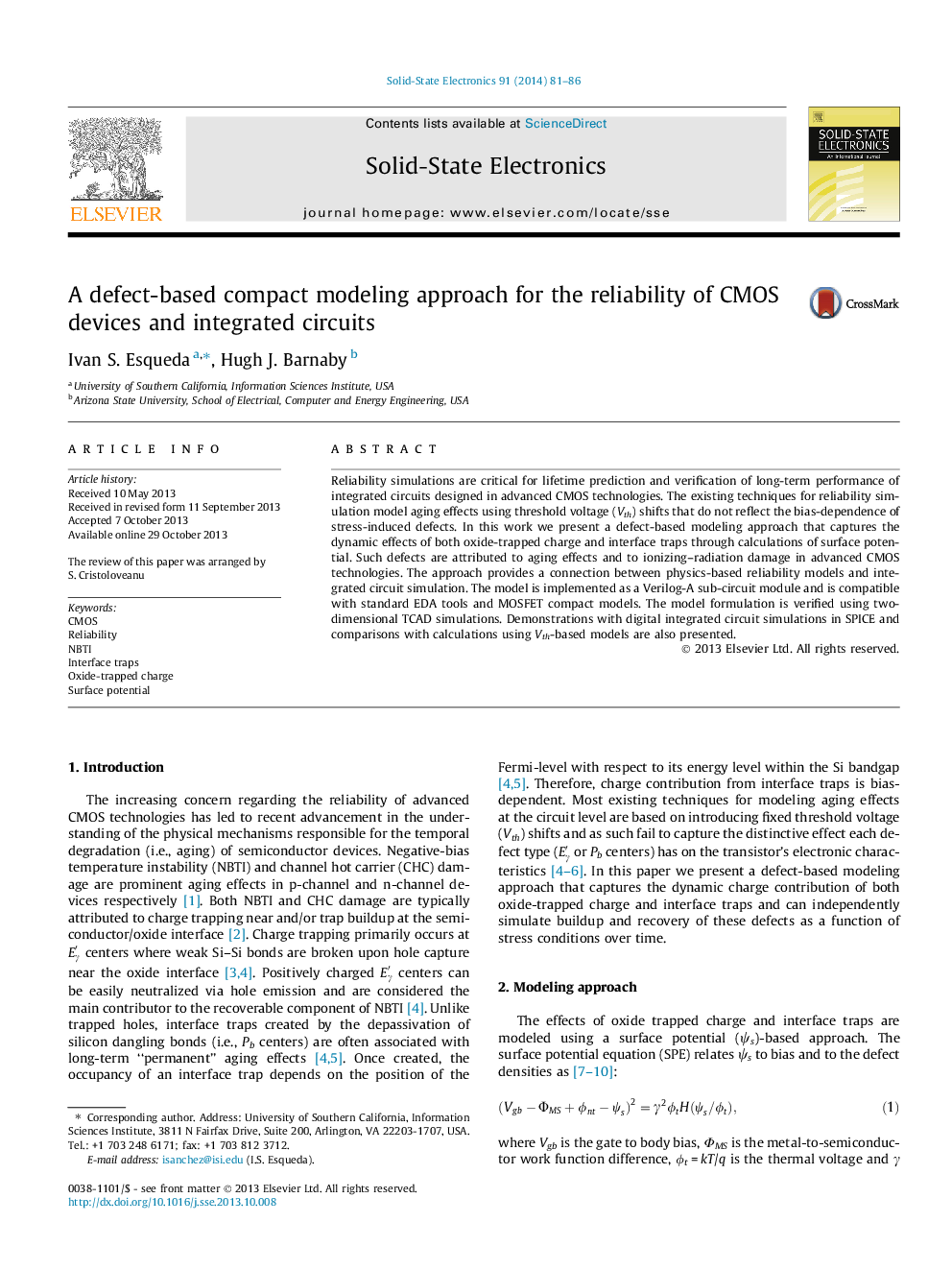| Article ID | Journal | Published Year | Pages | File Type |
|---|---|---|---|---|
| 748092 | Solid-State Electronics | 2014 | 6 Pages |
•We present a defect-based compact model for CMOS devices and circuit reliability.•The model captures the bias dependence of interface traps and oxide charges.•Modeling approach connects reliability physics and integrated circuit simulation.•Calculations of surface potential and induced voltage shifts verified with TCAD.•Corrects inaccuracies in typical fixed voltage (Vth-based) modeling techniques.
Reliability simulations are critical for lifetime prediction and verification of long-term performance of integrated circuits designed in advanced CMOS technologies. The existing techniques for reliability simulation model aging effects using threshold voltage (Vth) shifts that do not reflect the bias-dependence of stress-induced defects. In this work we present a defect-based modeling approach that captures the dynamic effects of both oxide-trapped charge and interface traps through calculations of surface potential. Such defects are attributed to aging effects and to ionizing–radiation damage in advanced CMOS technologies. The approach provides a connection between physics-based reliability models and integrated circuit simulation. The model is implemented as a Verilog-A sub-circuit module and is compatible with standard EDA tools and MOSFET compact models. The model formulation is verified using two-dimensional TCAD simulations. Demonstrations with digital integrated circuit simulations in SPICE and comparisons with calculations using Vth-based models are also presented.
